#ancient burial
Text
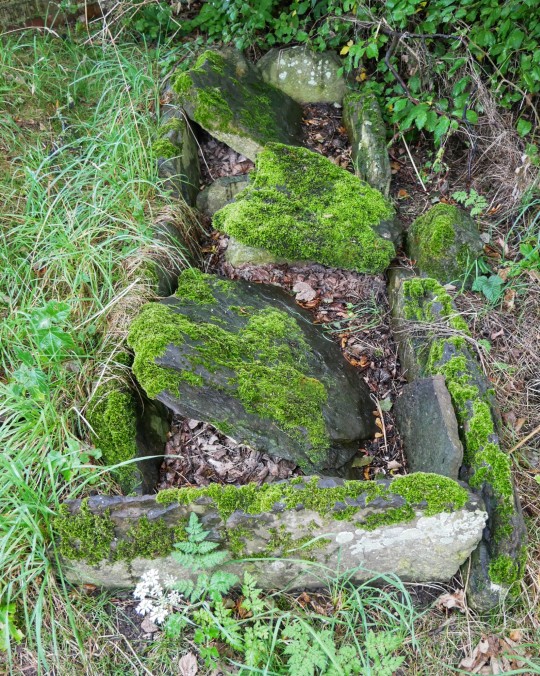


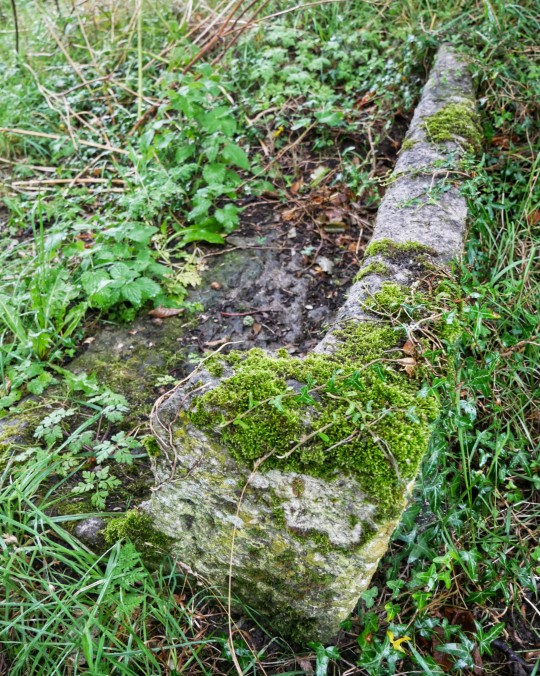
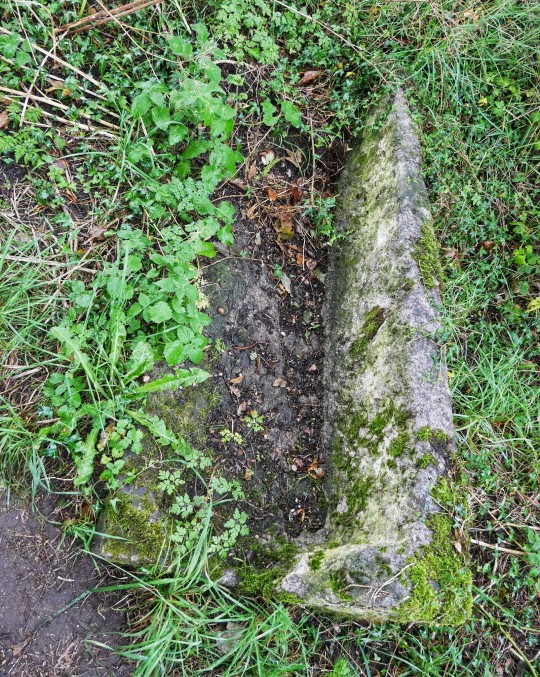

Rudston Roman Sarcophagus and Cist, Rudston, East Yorkshire
#iron age#roman#romans#roman burial#roman sarcophagus#sarcophagus#ancient craft#ancient burial#archaeology#relic#stonework#landscape#outdoors#churchyard#yorkshire#roman britain#roman living#ancient cultures
98 notes
·
View notes
Text
Random Fact #6,477
One of the most perfectly preserved corpses in history (if not the most well-preserved) is a 2,000-year-old Chinese mummy now known as Lady Dai.

^ A wax reconstruction of Lady Dai based on what she looked like upon discovery
Despite her age, when she was first discovered she was so well-preserved that she looked like a fresh corpse -- right down to her nose hairs and eyelashes, blood in her veins, and partially digested food (and parasites) in her stomach.
Researchers said her body gave them nearly as much info as a fresh corpse would, which is why we know for certain her cause of death: a heart attack triggered by acute pain from gallstones getting passed.
Also, her blood was type A.
Let me know if you want to hear more about her! :)
#did you know#mummy#mummies#china#little known fact#ancient burial#random fact#random factoid#random facts#random factoids#yes really#country facts#history facts
16 notes
·
View notes
Text

Two bodies buried together. Avan Arindj, Armenia, 1st century BC
#the inherent romance of being buried together#there was no other info there sadly I'd like to know more#armenia#ancient burial#skeleton
69 notes
·
View notes
Photo
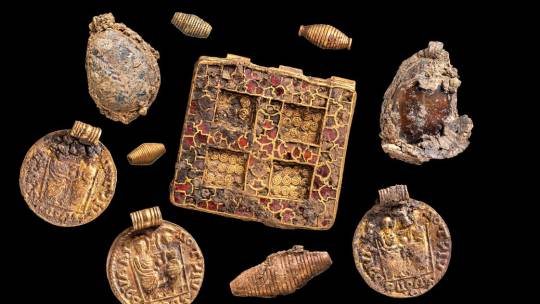


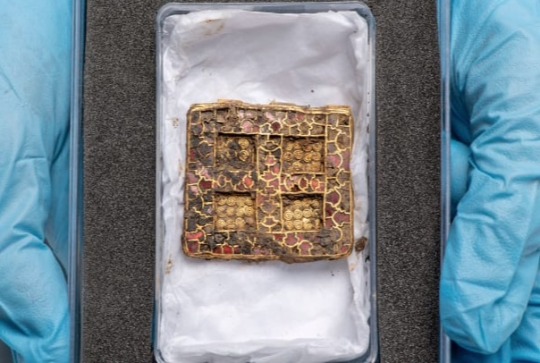
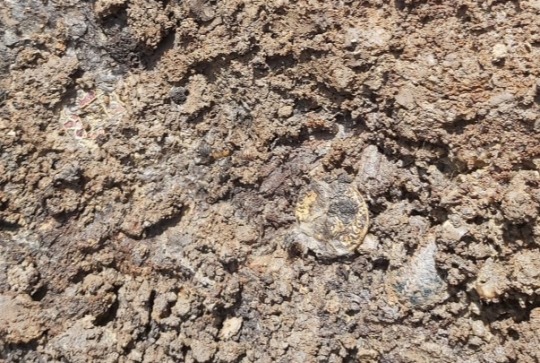
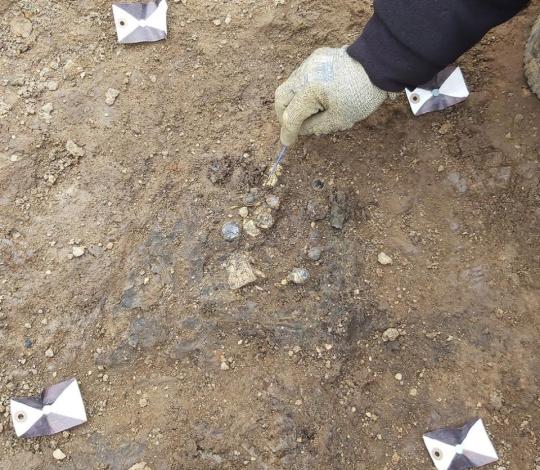
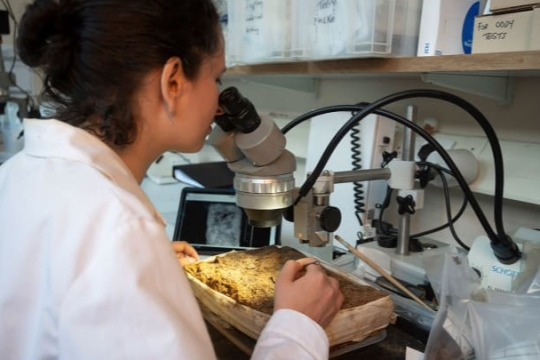
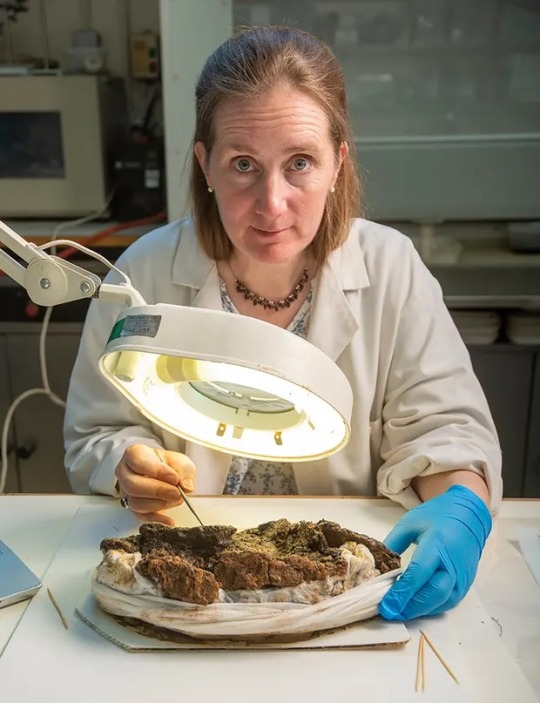

Gold and Jeweled Necklace Found at Burial Site of Powerful Anglo-Saxon Woman in England
Archaeologists have discovered a stunning 1,300-year-old necklace, made of gold, garnets and other semiprecious stones, at an excavation site in central England earmarked for a housing development.
The necklace and other precious objects, called the Harpole Treasure after the local parish in Northamptonshire county where they were unearthed in April, also revealed a powerful role played by some women in Anglo-Saxon England.
The jewelry piece was buried with a woman of high status, who died between 630 AD and 670 AD, according to researchers at the Museum of London Archaeology who unearthed the treasure. The trove also included a relatively large silver cross, two decorated pots and a shallow copper dish.
The Anglo-Saxon bling suggested the woman was powerful in her own right and extremely devout, perhaps an early Christian leader, a princess or an abbess.
The grave site is thought to be the most significant burial from a unique sliver of English history when pagan and Christian beliefs intermingled and women held powerful positions in the early church.
The discovery's importance, the archaeologists said, was of a similar magnitude to that of other monumental Anglo-Saxon treasures unearthed in England, such as Basil Brown's famed find in 1939 at Sutton Hoo, where a warrior king was buried in a ship, and the Staffordshire Hoard of gold and silver artifacts, discovered in 2009 by an amateur metal detectorist in a field in Staffordshire, England.
About a dozen other high-status female burials, known as bed burials, have been discovered elsewhere in England. In some cases, the grave sites included similar necklaces.
Few of these burial sites date back earlier than the 7th century AD, when burials of high-status men were more common, and as Christianity took root, later graves rarely featured valuable objects because being buried with ornate jewelry, such as the necklace, was frowned upon by the early Christian Church, said Lyn Blackmore, a senior finds specialist at MOLA.
"The Harpole Treasure, it's not the richest (bed burial) in terms of the number of artifacts but it is the richest in terms of investment of wealth ... and it has the highest amount of gold and religious symbolism," she said at a news briefing.
X-rays taken of blocks of soil removed from the grave site revealed an ornately decorated but delicate cross cast in silver and mounted on wood. The artifact also had unusual depictions of human faces cast in silver.
Organic matter found in the grave is thought to contain fragments of feathers and textiles like leather, and further study should uncover the nature of the bed burial and whether it had a cover or canopy. The two pots were Frankish in style, Blackmore said, suggesting they came from what is now France or Belgium. The archaeologists hope molecular analysis will allow them to identify the residue in the pots; to date, their analysis has ruled out myrrh.
The skeleton itself was fully decomposed, with the exception of tiny fragments of tooth enamel, but the necklace and other features of the burial convinced the archaeologists that its occupant was female, Blackmore said.
Opulent gold riches
The discovery was made on April 11 but was made public for the first time on Tuesday.
The necklace is the most ostentatious of its type ever to be found in Great Britain, with 30 pendants and beads made of gold, garnets, glass and semiprecious stones strung together along with Roman coins. The striking artifact was found on the penultimate day of an eight-week excavation, said Levente-Bence Balázs, the MOLA site supervisor who first spotted the treasure glinting in the soil.
He was excavating what was thought to be a rubbish pit when he came across the crowns of two teeth, which signaled a burial of some sort. He then saw the rectangular pendant that formed the center of the necklace.
"In 17 years of excavating sites, this was the first time I've found gold. It's not just the artifacts, it's the sheer magnitude of the find," he said.
The excavation work was funded by the house-building company Vistry Group, which said it had waived any rights to the the artifacts that now belong to the state.
he first occupants of the housing development are due to move into their homes in two weeks' time and don't yet know about the treasure that lies beneath their community, said Daniel Oliver, regional technical director at Vistry West Midlands. Nothing has been built on the precise location of the burial, which isn't being made public, he added.
The area where the burial site was found was otherwise unremarkable, with no mounds or other features marking the grave. Archaeologists who worked at the site said they have surveyed the area thoroughly and are confident there is nothing else to find.
Officials at the Museum of London Archaeology said it would take at least two years to study the finds, but hoped the Harpole Treasure would eventually go on public display.
By Katie Hunt.
#Gold and Jeweled Necklace Found at Burial Site of Powerful Anglo-Saxon Woman in England#The Harpole Treasure#Northamptonshire county#ancient tomb#ancient grave#ancient burial#ancient jewelry#ancient artifacts#history#history news#ancient history#ancient culture#ancient civilizations#anglo-saxon#anglo-saxon history#archeology#archeolgst#gold#treasure
41 notes
·
View notes
Text
Pretty spectacular find. That grave looks like it was made for someone smaller, though. Unless the woman was trying to crawl out. Happy Hallowe'en, everyone!
#ancient Greece#Early Minoan era#ancient burial#gold necklace#archaeology#ancient Crete#ancient Sisi
46 notes
·
View notes
Text
The discovery of a pre-Viking ship burial in Scandinavia challenges the notion that Vikings were the pioneers of this fascinating tradition. The ancient ship burial was discovered within a mound on Norway’s island of Leka.
#ship burial#burial mound#Viking#Norway#ships#burial#Scandinavia#mound#ancient#history#ancient origins
564 notes
·
View notes
Text
In the Americas, for example, many cultures masked their dead in a fascinating array of styles. We have this one, placed on the face of a ruler from northern Peru who died about 1000 years ago:

The great Mexican city of Teotihuacan buried some of its dead with masks; this one would have been tied on through the holes in the ears:

The Mayans buried the king of Palenque, Kinich Janaab Pakal, in the 600s CE under this stunning jade mask:

Click the link below to read the whole piece and see my favorite one:
{WHF} {Ko-Fi} {Medium}
452 notes
·
View notes
Text
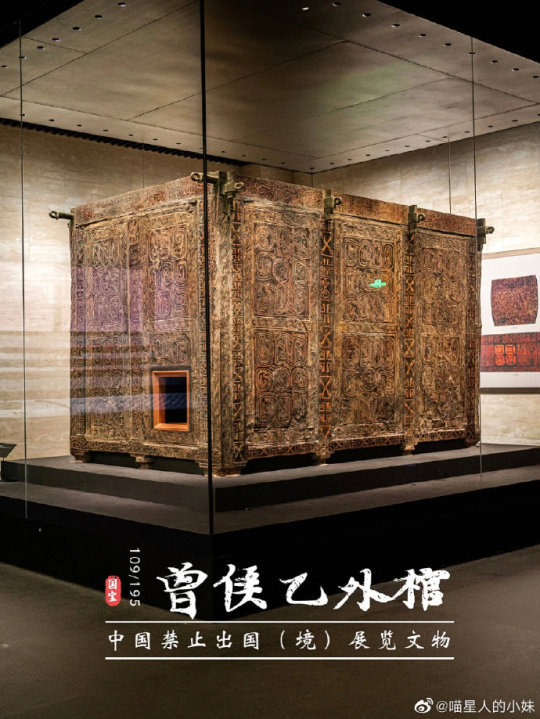

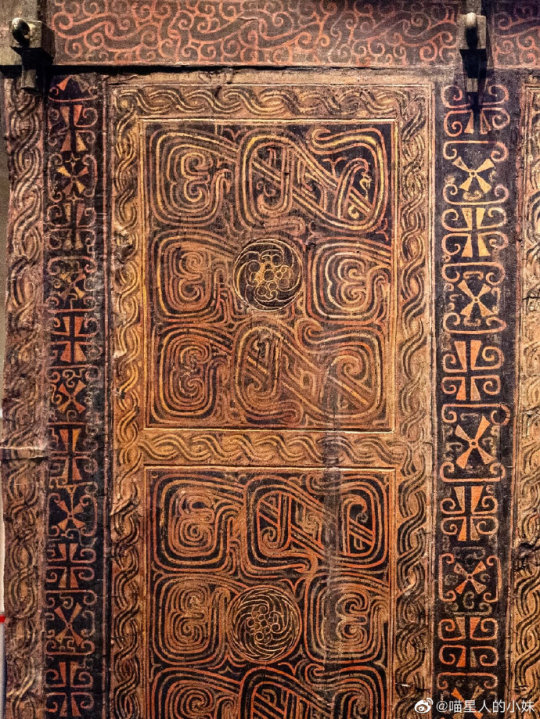
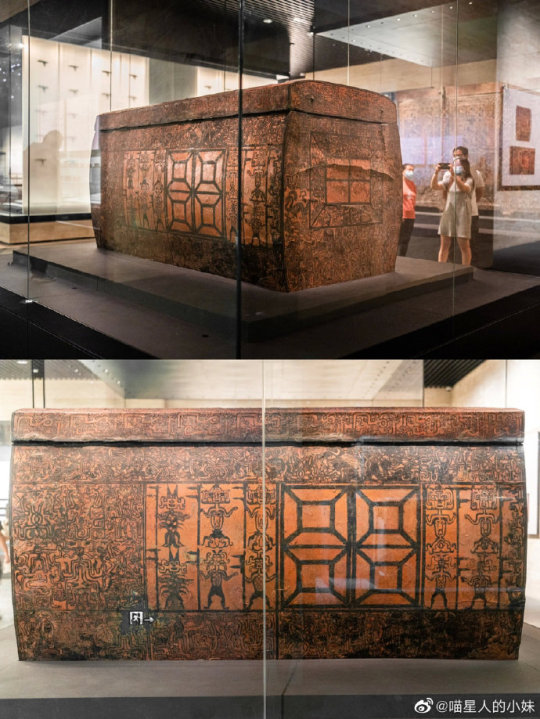
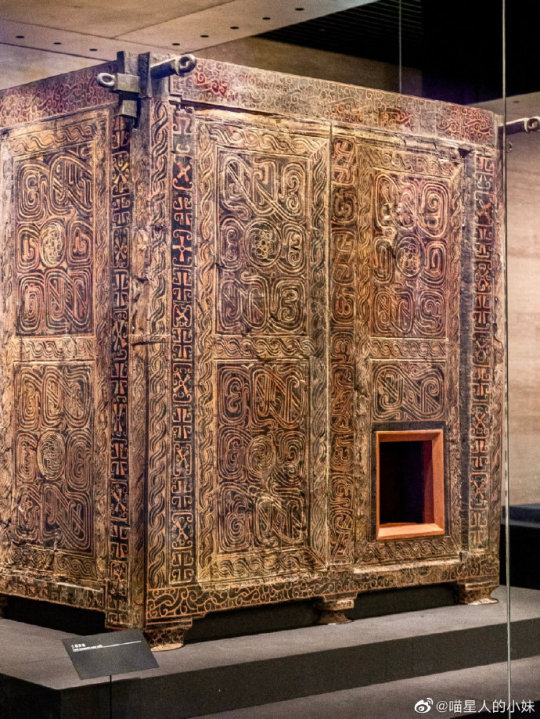

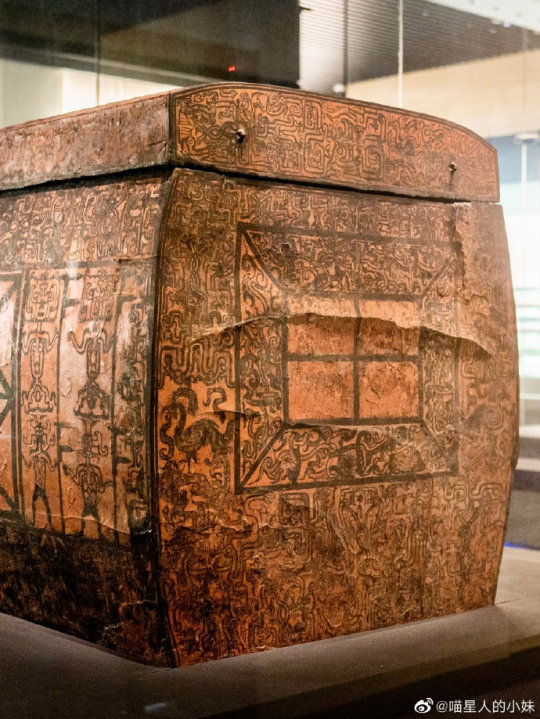
Luxury Lacquered Coffin of Marquis Yi: Largest in History
The coffin of the Warring States period was unearthed from the tomb of Marquis Yi of Zeng (曾侯乙) in Leigudun (擂鼓墩), Suizhou, Hubei, in 1978.
The outer coffin is 3.2 meters long, 2.1 meters wide, 2.2 meters high, and weighs about 7 tons. It is composed of 10 copper columns embedded within 10 wooden boards of the same height. The painting on the surface of one of the coffins depicts weird and armed anthro-zoomorphic beings.
Displayed in Hubei Provincial Museum (湖北省博物馆).
Photo: ©喵星人的小姐
#ancient china#chinese culture#chinese art#chinese history#coffin#ancient tomb#burial#warring states period#warring states era#artefact#lacquer#曾侯乙墓#laquerware#tomb art#archeology#chinese customs
302 notes
·
View notes
Text
if i could be bothered. a fucked up horses of antiquity bracket contest would be funny
#that one king’s horses that are human flesh?#bucephalus probably. horse of seius. caesar’s Toe horse. caligula’s horse#various ducked up horses from the alexander romance. the horses at the end of the world. the robot horses that breathe fire or whatever#THE TROJAN HORSE.#achilles’ horse that speaks Once to tell him he’s totally going to die#the horse sacrifice from the lefkandi burial#maybe more!!!!!!#i’m not a horse girl (gn) btw i promise. i used to have nightmares about horses with human hands#all over their bodies instead of hair. the fingers constantly moving. augh#evil ancient horse#beeps
528 notes
·
View notes
Text
Review of The Horse, the Wheel, and Language: How Bronze-Age Riders from the Eurasian Steppes Shaped the Modern World by David W. Anthony

I will be upfront, it is a very technical book. If you are not well versed in the anthropological categorizing of cultures and time periods of the areas being discussed it can be very difficult to keep up with the more finite points the author is making. That being said, I had never heard of any of the specific cultures being discussed in the Danube Valley and was still able to enjoy this book and its well put together analysis of various aspects of language, culture, technological developments and shifts in behaviors and place.
If you are especially interested in any of the major themes this book discusses (which is in all honesty is an extensive list including but not limited to; the development of Indo-European language, the time periods and locations as well as likely motivation for domestication of various livestock types, the cultural effects of technological developments on the peoples of the Eurasian Steppes and their migration/trading patterns) I do highly recommend. It is heavy reading but extremely illuminating.
#The horse the wheel and language#David W Anthony#historical anthropology#anthropologist#anthropology#ancient languages#language#historical linguistics#linguistics#proto indo european#indo european#steppes#eurasian#eurasian steppe#horse#horses#husbandry#burials#Cattle#sheep#book review
158 notes
·
View notes
Text
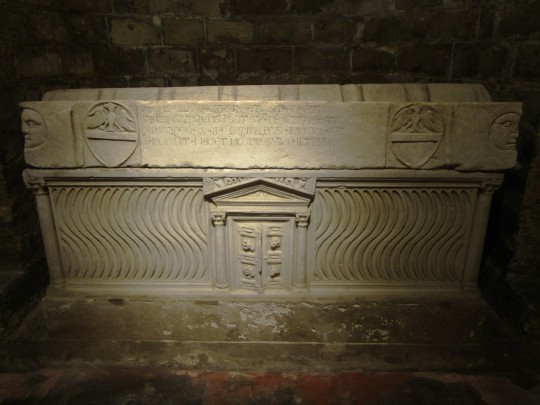
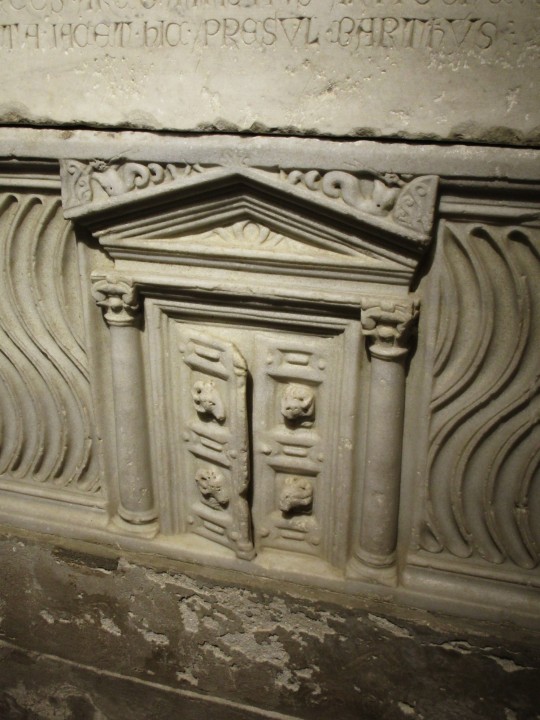

Roman sarcophagus with strigliata decoration, Carrara marble, used for the burial of Archbishop Bartolomeo d'Antiochia in 1311
Crypt of Palermo Cathedral - photos by Charles Reeza
#Roman art#marble sculpture#tomb#Sicily#Italy#Sicilia#burial practices#ancient art#classical antiquity
251 notes
·
View notes
Text



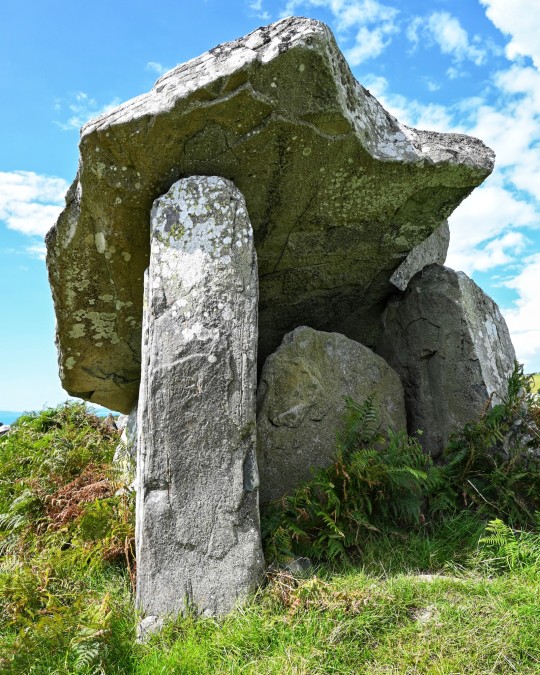

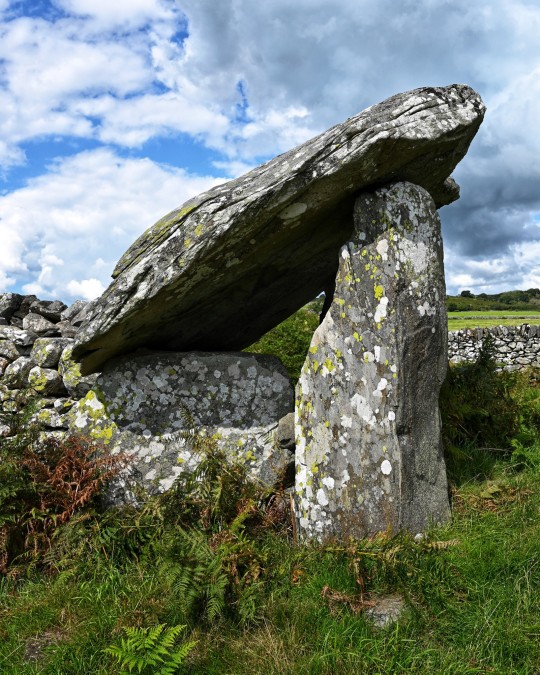
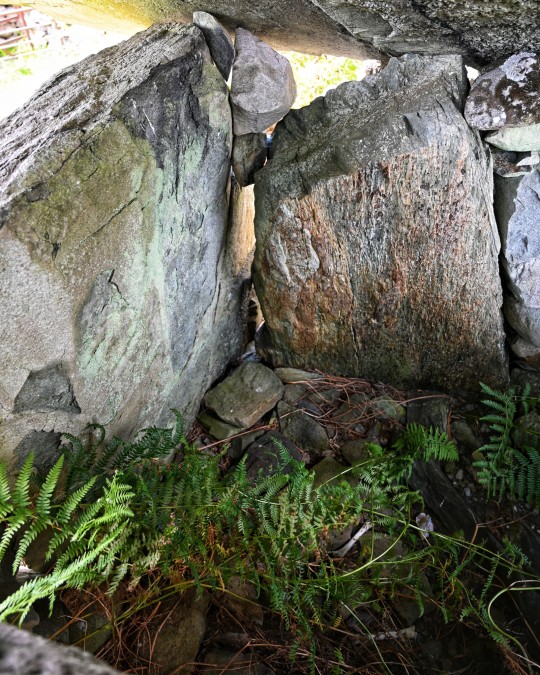



Gwern Einion Prehistoric Burial Chamber, Pensarn, Wales
#ice age#stone age#bronze age#copper age#iron age#neolithic#mesolithic#calcholithic#paleolithic#prehistory#prehistoric#megalith#megalithic#burial chamber#burial ground#burial mound#capstone#archaeology#ancient sites#Wales
738 notes
·
View notes
Text

Skeletons found in the Grotte des Enfants at Grimaldi. The double interment is sometimes advanced as evidence of a ritual in which a living being was sacrificed on the tomb of the dead. Larousse
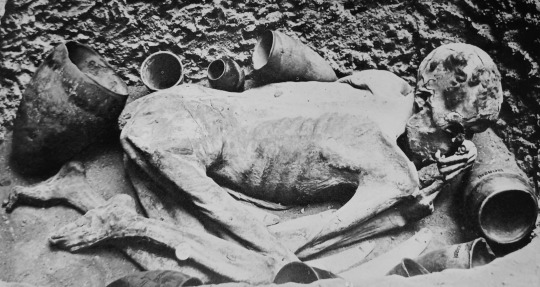
Skeleton of a prehistoric woman dating from c. 3000 B.C. found buried in sand. The coffin in which is has now been placed is a reconstruction. British Museum
Illustrations from Larousse Encyclopedia of Ancient and Medieval History, 1963
#art#illustration#history#black and white#skeletons#skulls#burial#grotte des enfants#medieval history#ancient history#larousse#british museum#death and dying#memento mori
58 notes
·
View notes
Text

Ancient Genomes Reveal the Presence of Down Syndrome in Past Societies
Burials show children with Down Syndrome and Edwards Syndrome were recognized members of their communities.
https://www.archaeologs.com/n/ancient-genomes-reveal-the-presence-of-down-syndrome-in-past-societies
//
Eski Genomlar Down Sendromunun Geçmiş Toplumlarda Varlığını Ortaya Koyuyor
Gömüler, Down Sendromlu ve Edwards Sendromlu çocukların toplumlarının birer üyesi olarak tanındıklarını gösteriyor.
https://www.archaeologs.com/n/eski-genomlar-down-sendromunun-gecmis-toplumlarda-varligini-ortaya-koyuyor
#archaeologs#archaeological#archaeology#history#dictionary#news#archaeological news#burials#ancient genomes#arkeoloji#haber#tarih
27 notes
·
View notes
Photo
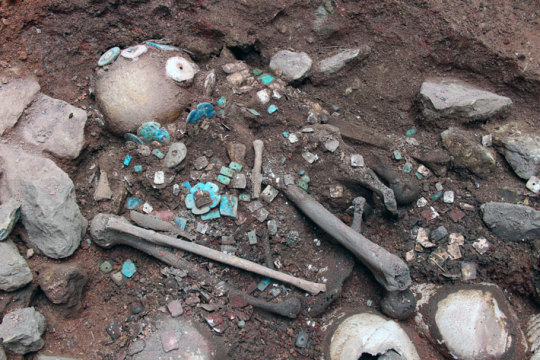

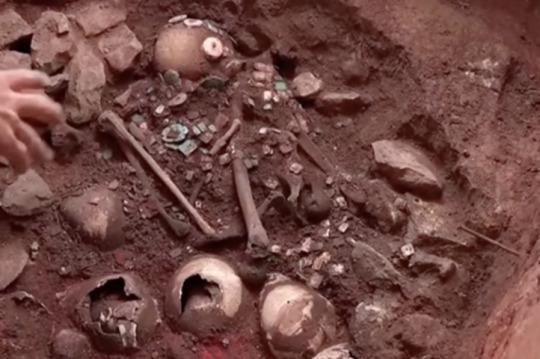
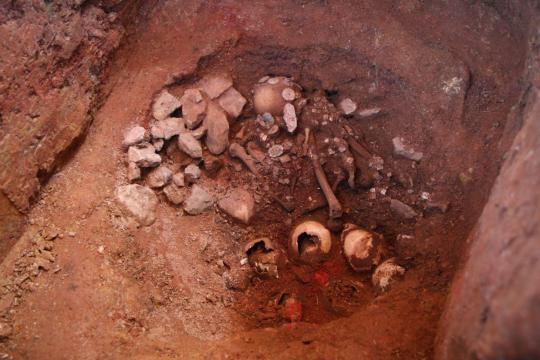

Ancient Tomb Belonging to Priest Found in Peru
Researchers have uncovered a nearly 3,000-year-old priest’s tomb at the Pacopampa archaeological site in northern Peru.
The burial chamber consists of a conical pit, one meter in diameter, sealed by a large natural boulder weighing more than half a ton. Preliminary dating indicates that the tomb dates to around 1000 BC. The man in the tomb is thought to have died between 25 and 35 years old.
The manner of burial, and especially the way the grave was sealed, suggests that the person buried was no ordinary person. This is also supported by the rich grave goods. There are many different decorations in the tomb, both of cheap materials (shells) and semi-precious stones.
“These objects were brought from a distant place. It could mean that this person had a very important religious power at the time.”
Among the items belonging to this man, archaeologists found several pututo, blown musical instruments made of large seashells (Strombus sp.) found on the shores of the Gulf of Guayaquil.
The pututo musical instrument was first found at Chavin de Huantar. This was a complex of monuments from the archaeological culture called Chavin.
The Chavin culture dates back to 900-200 BC, its representatives lived in the north of modern Peru, in the mountains – over three kilometers above sea level.
Earlier, scientists have recorded traces of the influence of the Chavin culture in Pacopampa, but according to dating, the latter appeared earlier, around 1200 BC and lasted until 500 BC. So the pututo found in Pacopampa’s tomb is older than the Chavin culture.
Researchers believe that the unusually buried man was not just a nobleman (as his funeral gifts attest). They believe he was a priest who used pututo in his rituals.
“In the modern world, shells may not seem like very valuable items. But for the inhabitants of the Andes, things were different.” “You had to walk to Guayaquil by the sea – that is, you had to go down the mountains, switch to a different climate and give up your usual diet.
The shells were so valuable that cheap substitutes appeared later – similar musical instruments began to be made from cattle horns. The pututo remained a ritual musical instrument during the Inca Empire and even after the arrival of Europeans in the New World.
The assumption that the deceased was a priest is based on where he was buried. Pacopampa was not an ordinary settlement, but a ceremonial complex, apparently used by representatives of different cultures.
Pacopampa consists of terraces, which, according to scientists, are considered the most prestigious place for both rituals and burial of the dead. Although treasure hunters have plundered the monument for centuries, archaeologists have found a significant number of artifacts and graves.
#Ancient Tomb Belonging to Priest Found in Peru#ancient burial#ancient grave#ancient tomb#pacopampa#archeology#archeolgst#ancient artifacts#history#history news#ancient history#ancient culture#ancient civilizations#chavin culture
26 notes
·
View notes
Text
CELTIC FOLKLORE&MYTHOLOGY 101
The Celts have a rich and beautiful history but one that is filled with many sorrows as well. From the invasion of the Roman Armies , to the forced conversion to christianity. Many of what we know now about the pre-colonization of the celtic people are through the "surviving" stories written by the Romans which occupied the lands and later the christian scribes of the middle ages. Some myths have only survived as stories passed down through Oral Traditions. Or through adopting Christian Attributes.
But even then, what has survived is but a mere fraction of what used to be, most surviving Celtic mythology belongs to the Insular Celtic peoples (the Gaels of Ireland and Scotland; the Celtic Britons of western Britain and Brittany). When it comes to written folklore and mythologies of the celtic people, the Irish have the largest written myths in the region only seconded by the written Welsh mythologies.
Today we will be focusing mainly on the Irish and Welsh Folklore and Mythology
Below I will list some of the names of the deities and spirits found throughout the Irish Folklore and Mythos
Morrigan- Shape shifting Goddess Who Hovered over the battlefields as a crow or raven
Danu- Irish Mother Goddess
Dagda-Irish God Of Life and Death as well as Magick, Married to Morrigan
Brigid - Celtic Goddess of Fire, Poetry, Cattle and patroness of smiths
Arwan- God of the Celtic underworld
Taranis- God Of Thunder
Excerpt from wikipedia
IRISH MYTHOLOGY
The myths are conventionally grouped into 'cycles'. The Mythological Cycle, or Cycle of the Gods, consists of tales and poems about the god-like Túatha Dé Danann and other mythical races.[6] Many of the Tuath Dé are thought to represent Irish deities. They are often depicted as kings, queens, druids, bards, warriors, heroes, healers and craftsmen who have supernatural powers.
Prominent members of the Tuath Dé include The Dagda ("the great god"), who seems to have been the chief god; The Morrígan ("the great queen" or "phantom queen"), a triple goddess associated with war, fate and sovereignty; Lugh; Nuada; Aengus; Brigid; Manannán; Dian Cecht the healer; and Goibniu the smith, one of the Trí Dé Dána ("three gods of craft"). Their traditional rivals are the monstrous Fomorians (Fomoire), whom the Tuath Dé defeat in the Cath Maige Tuired ("Battle of Moytura").
Other important works in the cycle are the Lebor Gabála Érenn ("Book of Invasions"), a legendary history of Ireland, and the Aided Chlainne Lir ("Children of Lir").
WELSH FOLKLORE & MYTHOLOGY
Important reflexes of British mythology appear in the Four Branches of the Mabinogi, especially in the names of several characters, such as Rhiannon, Teyrnon, and Brân the Blessed (Bendigeidfran, "Bran [Crow] the Blessed"). Other characters, in all likelihood, derive from mythological sources, and various episodes, such as the appearance of Arawn, a king of the Otherworld seeking the aid of a mortal in his own feuds, and the tale of the hero who cannot be killed except under seemingly contradictory circumstances, can be traced throughout Proto-Indo-European mythology. The children of Llŷr ("Sea" = Irish Ler) in the Second and Third Branches, and the children of Dôn (Danu in Irish and earlier Indo-European tradition) in the Fourth Branch are major figures, but the tales themselves are not primary mythology.
While further mythological names and references appear elsewhere in Welsh narrative and tradition, especially in the tale of Culhwch and Olwen, where we find, for example, Mabon ap Modron ("Divine Son of the Divine Mother"), and in the collected Welsh Triads, not enough is known of the British mythological background to reconstruct either a narrative of creation or a coherent pantheon of British deities. Indeed, though there is much in common with Irish myth, there may have been no unified British mythological tradition per se. Whatever its ultimate origins, the surviving material has been put to good use in the service of literary masterpieces that address the cultural concerns of Wales in the early and later Middle Ages.
The celtic traditions and their pagan Practitioners in the modern age.
One example of the modern practitioners which have celtic roots as a basis for their religion would be the New Druidic Movement of the 21st Century.
Born from the need of many who wish to delve deeper into their roots they've taken the historical context of the original druids of the Iron Age and have matched it closer with new age spirituality.
Druid~
The Old Irish form was "drui", and in Modern Irish and Gaelic the word is "draoi" or "druadh" (magician, sorcerer).
These New Druids take inspiration from the mythologies from all around the celtic regions, Ireland , Scotland, wales , Britannia. And brings them together to create what is now the new Druidic Order.
They are primarily animistic , ( All things in nature hold a spirit) and the majority of druids in this new order are also polytheistic. They hold Great Reverence towards the spirits of the land and the magick of the land of their ancestral Homeland.
Antiquity Does not mean authenticity, things don't need to be ancient in order for them to feel powerful and tangible to the practitioner. Druids as a living practice is an extension of the culture of the celtic people.
And as such it is not claiming to be the druids of the past, (as we have very little information on their practices and how they lived.) But as a cultural movement they strive to be the stewards of Folklore and Folk practices for the coming generations.
If you would like to learn more on the Druidic Faith and the nuances of specifically WELSH Druidic Faith take this course into consideration from the Anglesey Druidic order
Welsh Celtic Witchcraft
This is honestly something which holds great value in learning more about as it pertains to the extension of knowledge outside Of the perceived Celtic Belief Systems,
In Welsh folk practices , Witches and Magickal practitioners were apart of daily life , Healer and wise woman whose power was said to come from Magickal Tomes which held spirits of demons and fairies inside.
Folk practices in Wales include the CURSING WELLS Ffynon Elian, Fairy Mounds .
A Great many different curses passed down from family to family, a famous Curse going around the internet is the One In Which a woman who is angered pulls out their TIT and Curses a man To Meet an Untimely Demise. Don't worry they usually deserved it.
There are so many beautiful and wonderful Folk Practices in Wales and Celtic practices in which I can't cover here but if you want to learn more and have a vested interest in the occult practices of other cultures give me a follow.
For more information on Wales Folklore in Video Format Visit The Below Youtube Channel :)
And if you would like to support the above Practitioner Mhara Starling I will link their book Here for Purchase. They go in depth on the folklore and occult practices of the Welsh people

#celtic folklore#incense#ancient#burial#animism#celtic#pagan#pagan witch#witchblr#wicca#witchcraft#paganism#paganlife#paganblr#pagan altar#witch#witchy vibes#witches#magus#magi#magick#spells#folklore#WanderingSorcerer
126 notes
·
View notes